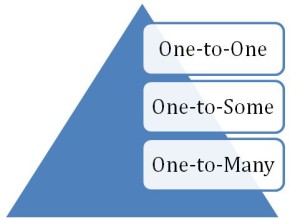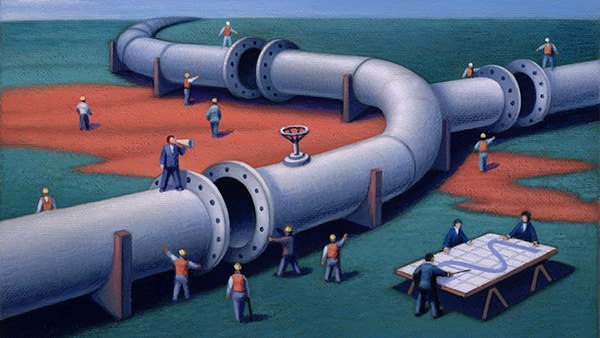
We at Veritus Group are passionate about major gifts (you may have guessed that from the majority of our blog posts). About a year and a half ago, we branched out to start developing strategies to help nonprofits with their mid-level donors.
Now we want to give away what we’ve learned so you can be successful!
What is considered a mid-level donor? Well, it’s different for every organization: for some organizations these donors give $250-$999 cumulatively per year, and in other larger organizations it’s $1,000-$9,999 cume per year. (For you, this could be lower or higher depending on your base of donors.)
Why Mid-Level?
Why did we get involved with mid-level donors? Because in many nonprofits, this area was not being properly developed and we believed, because of our successful work with major gift caseloads, that we could create a dynamic mid-level strategy that ultimately benefits major gifts as well.
We had clients come to us asking, “Our major gift program needs more prospects. How can we unclog our donor pipeline and retain more mid-level donors who will grow into our major gift program?”
 See this donor pyramid? This is how we look at it. Your new and general donors are at the bottom, getting a one-to-many marketing approach. This is mainly through direct mail, e-mail, on-line, telemarketing and social media strategies. It helps you to acquire and attract donors, getting them acquainted with your mission and developing in them a real heart for your cause.
See this donor pyramid? This is how we look at it. Your new and general donors are at the bottom, getting a one-to-many marketing approach. This is mainly through direct mail, e-mail, on-line, telemarketing and social media strategies. It helps you to acquire and attract donors, getting them acquainted with your mission and developing in them a real heart for your cause.
Now, let’s look at the top of the pyramid. This is the familiar strategy for major gifts. The one-to-one approach develops relationships between people and helps you understand who your donors really are. Our major gifts strategy is ultimately about sitting at a table with a donor, looking them in the eye and inviting them to invest in your organization. Many (if not most) of these donors start out as new, general donors in the one-to-many program, and their gifts and involvement grow so that they flow into the major gift program.
However, without a healthy mid-level donor program (the bridge between general and major donors), this pipeline will not be sufficient to keep your major donor program growing and healthy. It requires a one-to-some approach that I’ll discuss in my next post.
Over and over we have seen clogged pipelines where donors are barely trickling into major gift programs. This pressures you to find major donors outside your own database, which leads to all sorts of distractions for major gift officers if not managed correctly.
We also see a ton of attrition going on with mid-level donors in ineffective “clogged” programs. Sometimes we see anywhere between 40-60% attrition. These lost donors represent hundreds of thousands and even millions of dollars going away, lost to the organization.
What happens is that the long-term value of your population of donors goes down. This puts more pressure on the organization to acquire donors at a lower cost. The donor file begins to shrink and ultimately, your major donor program starts to stagnate over time.
This is not a pretty picture!
This is exactly why you need to consider creating a mid-level donor program. Let’s face it: many nonprofits have created a vast infrastructure and spend a ton of money on one-to-many marketing. And many non-profits are now seeing that major gift programs are a must if they want to grow (although there are still plenty out there that haven’t realized this yet). But most nonprofits have not put in the thought, energy and expense to cultivate their mid-level donors who will ultimately grow into their major gift program.
Right now, most nonprofits are treating a $750-a-year donor (cumulative giving) the same as they do a $15-a-year donor. They are probably spending anywhere between $10-$18 per donor per year to cultivate them.
The question is, “Could you spend more on the $750-a-year donors and not only retain more of them (thus bringing in more net revenue), but also move them into major gift programs much more quickly?”
In my next post, I’m going to answer that question, then show you what we’ve done and what you can do to unclog your donor pipeline. I’ll also show you some of the results we’ve seen from our work over the past 18 months.
Hang on, it’s going to be good!
Jeff
Search Blog Posts







Thank you! Thank you! I’m in the process of turning over some of my database administration work to another employee. My new title is Donor Services Manager (used to be Systems Manager – yuk!) and I am working on developing a Mid-Level donor program as well as a new donor welcome program. This series could not come at a better time for me. I’m looking forward to reading it and learning some new techniques.
I’ll see you at the DMA conference in NYC next week!